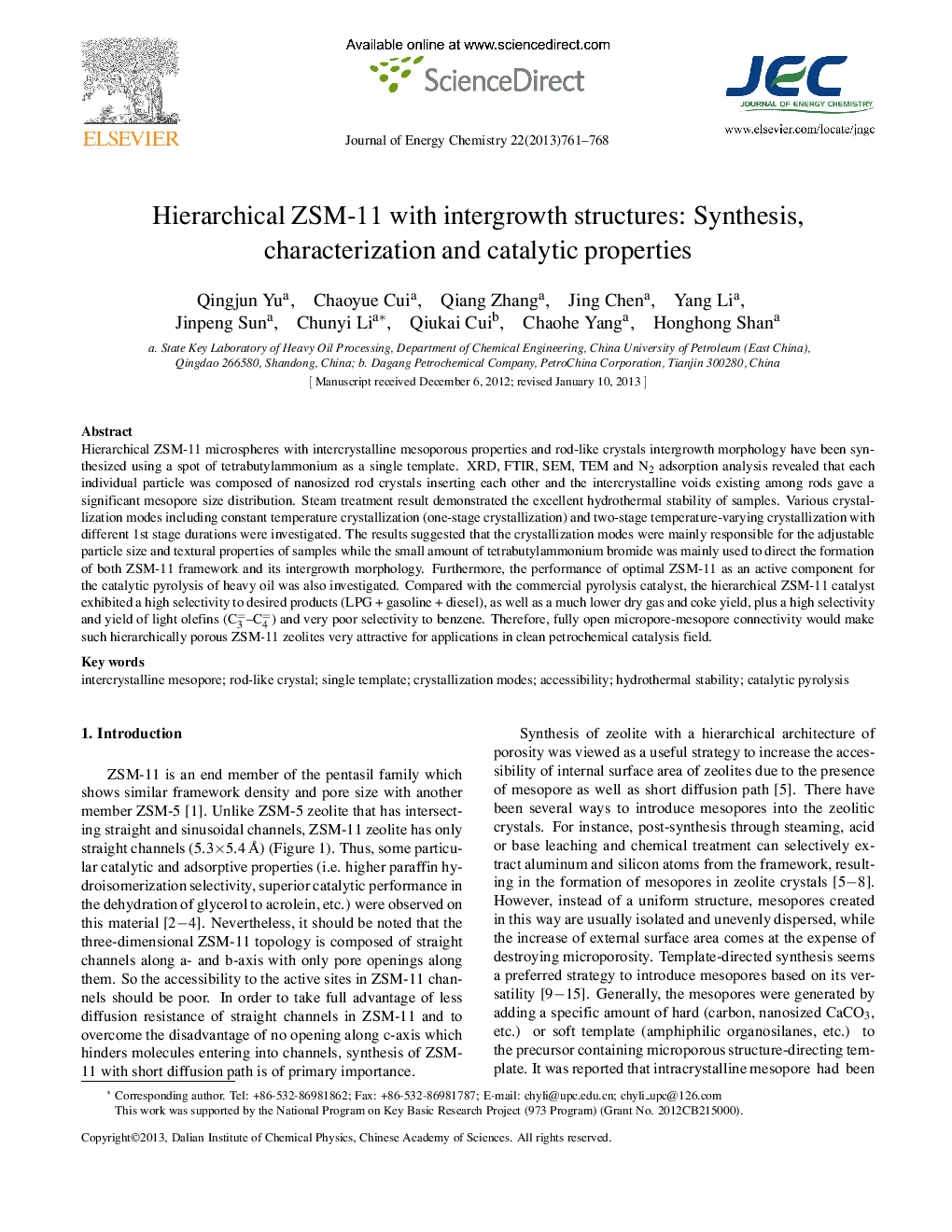| Article ID | Journal | Published Year | Pages | File Type |
|---|---|---|---|---|
| 64086 | Journal of Energy Chemistry | 2013 | 8 Pages |
Hierarchical ZSM-11 microspheres with intercrystalline mesoporous properties and rod-like crystals intergrowth morphology have been synthesized using a spot of tetrabutylammonium as a single template. XRD, FTIR, SEM, TEM and N2 adsorption analysis revealed that each individual particle was composed of nanosized rod crystals inserting each other and the intercrystalline voids existing among rods gave a significant mesopore size distribution. Steam treatment result demonstrated the excellent hydrothermal stability of samples. Various crystallization modes including constant temperature crystallization (one-stage crystallization) and two-stage temperature-varying crystallization with different 1st stage durations were investigated. The results suggested that the crystallization modes were mainly responsible for the adjustable particle size and textural properties of samples while the small amount of tetrabutylammonium bromide was mainly used to direct the formation of both ZSM-11 framework and its intergrowth morphology. Furthermore, the performance of optimal ZSM-11 as an active component for the catalytic pyrolysis of heavy oil was also investigated. Compared with the commercial pyrolysis catalyst, the hierarchical ZSM-11 catalyst exhibited a high selectivity to desired products (LPG + gasoline + diesel), as well as a much lower dry gas and coke yield, plus a high selectivity and yield of light olefins ( C3=-C4=) and very poor selectivity to benzene. Therefore, fully open micropore-mesopore connectivity would make such hierarchically porous ZSM-11 zeolites very attractive for applications in clean petrochemical catalysis field.
